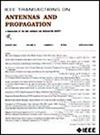Sparse Regularization With Learnable Partition Weights for Super-Resolution Imaging of Ultrawideband Radar
IF 4.6
1区 计算机科学
Q1 ENGINEERING, ELECTRICAL & ELECTRONIC
引用次数: 0
Abstract
In this article, we propose a novel method based on sparse regularization with learnable partition weights (LPWs) for bandwidth extrapolation (BWE) 2-D imaging of ultrawideband radar. Our method aims to improve the quality of super-resolution image reconstruction with limited observation bandwidth, by the strategies of weighting and supervised learning. First, in our new sparse regularization, we assign different LPWs to scattering centers based on their frequency dependence factors (FDFs). These LPWs can provide different regularization strengths regarding FDFs, which improve the accuracy of BWE. Then, we propose an unrolling algorithm named fast iterative shrinkage thresholding algorithm (FISTA)-LPW, to optimize these LPWs through supervised learning. We utilize the full band spectrums as training labels, to reduce extrapolation error in a data-driven manner. We analyze the advantage of our sparse regularization with LPWs and show that it can address the issue of degraded extrapolation accuracy in the cases of limited observation bandwidth. The experimental results on simulated and real radar data demonstrate that our method outperforms existing methods for BWE in terms of super-resolution image quality. Notably, our method achieves a radar image reconstruction accuracy of 90% while only utilizing 75% of the full bandwidth on real radar data.求助全文
约1分钟内获得全文
求助全文
来源期刊
CiteScore
10.40
自引率
28.10%
发文量
968
审稿时长
4.7 months
期刊介绍:
IEEE Transactions on Antennas and Propagation includes theoretical and experimental advances in antennas, including design and development, and in the propagation of electromagnetic waves, including scattering, diffraction, and interaction with continuous media; and applications pertaining to antennas and propagation, such as remote sensing, applied optics, and millimeter and submillimeter wave techniques

 求助内容:
求助内容: 应助结果提醒方式:
应助结果提醒方式:


